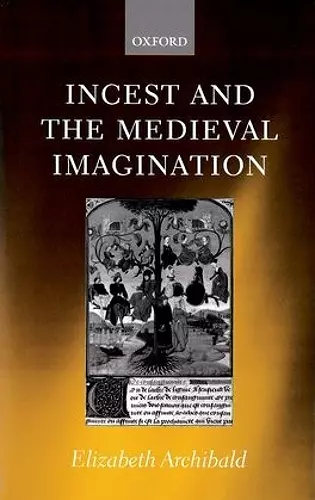Incest and the Medieval Imagination
Format:Hardback
Publisher:Oxford University Press
Published:24th May '01
Currently unavailable, and unfortunately no date known when it will be back

Incest is a remarkably frequent theme in medieval literature; it occurs in a wide range of genres, including romances, saints's lives, and exempla. Historically, the Church in the later Middle Ages was very concerned about breaches of the complex laws against incest, which was defined very broadly at the time to cover family relationships outside the nuclear family and also spiritual relationships through baptism. Medieval writers accepted that incestuous desire was a widespread phenomenon among women as well as men. They are surprisingly open about incest, though of course they disapprove of it; in many exemplary stories incest is identified with original sin, but the moral emphasizes the importance of contrition and the availability of grace even to such heinous sinners. This study begins with a brief account of the development of medieval incest laws, and the extent to which they were obeyed. Next comes a survey of classical incest stories and their legacy; many were retold in the Middle Ages, but they were frequently adapted to the purposes of Christian moralizers. In the three chapters that follow, homegrown medieval incest stories are grouped by relationship: mother-son (focusing on the Gregorius legend), father-daughter (focusing on La Manekine and its analogues), and sibling (focusing on the Arthurian legend). The final chapter considers the very common medieval trope of the Virgin Mary as mother, daughter, sister and bride of Christ, the one exception to the incest taboo. In western society today, incest has recently been recognized as a serious social problem, and has also become a frequent theme in both fiction and non-fiction, just as it was in the Middle Ages. This interdisciplinary study is the first broad survey of medieval incest stories in Latin and the vernaculars (mainly French, English and German). It situates the incest theme in both literary and cultural contexts, and offers many thought-provoking comparisons and contrasts to our own society in terms of gender relations, the power of patriarchy, the role of religious institutions in regulating morality, and the relationship between life and literature.
Archibald does a good job of demonstrating that medieval culture, in spite of its piety (or perhaps because of it?), was fairly obsessed with the problem of incest. * Medium Ævum *
The book covers a lot of ground and does so clearly and efficiently. * Medium Ævum *
... impressive study. * The Year's Work in Modern Language Studies *
What gives this book added interest is its historical range ... will endure as a source of reference for many years to come ... thought-provoking study. * The Review of English Studies *
The scholarship demonstrated in this work is exemplary. There are extensive sources and documentation; pertinent citations are always translated. Terms are meticulously defined ... The Appendix contains succinct but thorough summaries of incest stories; the bibliography is exhaustive, making this book a substantial research tool and reference for a powerful literary theme. Anyone working on the theme of incest in medieval literature should read this book. Anyone who appreciates excellent scholarship in general will want to read this book for the pure pleasure of it. * Linda M. Rouillard, University of Toledo *
Elizabeth Archibald's book makes an admirable introduction to the whole topic. * Times Literary Supplement *
ISBN: 9780198112099
Dimensions: 224mm x 145mm x 21mm
Weight: 480g
312 pages